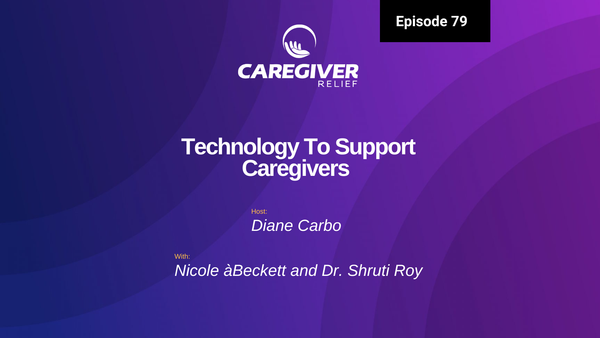Comprehensive Guide to In-Home Health Care Services: Understanding, Accessing, and Benefiting from Personalized Medical and Non-Medical Care
Explore the payment options for medical in-home health care, including Medicare, Medicaid, private insurance, and more. Understand copays, deductibles, and out-of-pocket expenses with insights into Medicare Advantage plans and their specific coverage details for in-home care services.

In the realm of personalized health care, the concept of aging in place has gained tremendous popularity. Nearly 90% of individuals over 65 prefer to live in their own homes for as long as possible. This ambition is made feasible through various forms of in-home health care services. This comprehensive guide delves into the nuances of in-home health care, exploring its types, benefits, challenges, costs, and the process of finding the right agency for your needs.
Understanding In-Home Health Care
In-home health care, is a service that brings medical and non-medical care directly to the patient's residence. These services are vital in supporting the elderly, injured, or chronically ill individuals to live independently and comfortably in their homes.
What is Medical Home Health Services?
Medical Home Health Care Services play a crucial role in the overall health and well-being of individuals who prefer to receive care in their own homes. These services are diverse and cater to a variety of medical needs, ranging from basic to complex medical procedures. Let's delve into the various aspects of these services:
Skilled Nursing Care: At the core of medical home health care services is skilled nursing care. Registered nurses or licensed practical nurses provide this care under a doctor's supervision. They are equipped to perform a range of medical tasks, such as wound dressing, administering medications, intravenous therapy, pain management, and monitoring vital signs. These nurses also play a key role in disease management and educating patients and their families about managing health conditions at home.
Physician Services: Some home health care services involve visits from physicians who oversee the medical aspects of the patient's care plan. They work in conjunction with the nursing staff to adjust treatments as necessary and provide medical consultations within the comfort of the patient's home.

Therapeutic Services: A significant part of medical home health care includes various therapies.
Physical Therapy: Helps patients regain or improve physical abilities, often post-surgery, injury, or due to chronic conditions. Physical therapists work on mobility, strength, balance, and coordination.
Occupational Therapy: Aims to assist patients in regaining independence by focusing on daily living activities, such as dressing, eating, and bathing.
Speech Therapy: Vital for patients who have experienced a stroke, injury, or conditions affecting speech and swallowing. Speech therapists help with language skills, cognitive communication, and swallowing dysfunction.
Wound Care: Specialized nurses or wound care specialists provide this service for patients with surgical wounds, pressure sores, or diabetic ulcers. They manage wound dressings, monitor healing, and educate on wound care techniques.
Home Health Aides: While primarily associated with non-medical care, home health aides can also assist in medical care settings, especially in helping patients with basic needs and ensuring they follow prescribed care regimens.
Patient and Caregiver Education: Educating patients and their caregivers about managing health conditions at home is a fundamental part of medical home health care. This includes instruction on medication management, diet and nutrition, disease process, and use of medical equipment.
Injections and Infusion Therapy: Some patients require regular injections or infusion therapies, such as chemotherapy, hydration therapy, or pain management medications. These services are administered by skilled nurses who are trained in intravenous therapies.
Nutrition Therapy: Dietitians or nutrition specialists may be part of the home health care team, providing nutritional assessments and planning to help manage health conditions like diabetes or heart disease.
Palliative and Hospice Care: For patients with terminal illnesses, palliative and hospice care services are provided to manage pain and symptoms, while offering emotional and spiritual support to the patient and family.

Specialized Medical Equipment and Technology: The use of specialized medical equipment, such as ventilators, oxygen therapy, or monitoring systems, is often integrated into medical home health care services, allowing for sophisticated care delivery at home.
In summary, Medical Home Health Care Services offer a comprehensive approach to patient care in a familiar and comfortable setting. This not only aids in the physical recovery and management of conditions but also supports the emotional well-being of patients by allowing them to stay in their own homes. The goal of these services is to provide high-quality medical care, tailored to the specific needs of each individual, while maintaining a close collaboration with the patient's healthcare team.
Paying for medical in-home health care involves navigating various insurance policies and understanding the associated costs like copays, deductibles, and out-of-pocket expenses. Here's a breakdown of how this type of care is typically financed:
Medicare:
Coverage: Medicare Part A and/or Part B can cover medical in-home health care if a doctor certifies it as necessary. This includes part-time or intermittent skilled nursing care, physical therapy, occupational therapy, speech-language pathology services, and more.
Copays and Deductibles: Under original Medicare, there are generally no copays or deductibles for covered home health care services. However, for durable medical equipment (DME), a 20% copay of the Medicare-approved amount might be required after meeting the Part B deductible.
Out-of-Pocket Expenses: If any services or equipment aren't covered by Medicare, these would be out-of-pocket expenses for the patient.
Medicaid:
Coverage: Medicaid coverage for in-home health care varies by state but typically includes a wide range of services for those who qualify.
Copays and Deductibles: Some states may require small copayments for Medicaid-covered services. However, Medicaid copays are generally lower than those of private insurance.
Out-of-Pocket Expenses: Costs not covered by Medicaid would fall to the patient or their family.
Private Health Insurance:
Coverage: Private health insurance policies vary greatly in terms of what in-home health care services they cover. It's important to check with the insurance provider for specific details.
Copays and Deductibles: Most private insurance plans have copays and deductibles that must be met before the insurer pays for services. The amount can vary based on the plan.
Out-of-Pocket Expenses: Any services not covered by the insurance plan, or costs exceeding the coverage limits, would need to be paid out-of-pocket.

Long-Term Care Insurance:
Coverage: These policies often cover in-home health care, but the specifics depend on the individual plan.
Out-of-Pocket Expenses: There could be limits on the amount or duration of coverage, after which costs would need to be covered out-of-pocket.
Veterans Benefits:
Coverage: Veterans may be eligible for in-home health care coverage through the Department of Veterans Affairs.
Out-of-Pocket Expenses: Any costs not covered by VA benefits would need to be paid by the veteran.
Out-of-Pocket Payment:
Full Payment: If a service is not covered by any form of insurance or benefit, or if an individual does not have insurance, the full cost of care must be paid out-of-pocket.
Supplemental (Medigap) Insurance:
Coverage: This can help pay some of the healthcare costs that Original Medicare doesn't cover, like copayments, coinsurance, and deductibles.
Medicare Advantage Plans (Part C):
Coverage: Medicare Advantage Plans are offered by private companies approved by Medicare. These plans provide all of Part A (Hospital Insurance) and Part B (Medical Insurance) coverage and often include additional benefits. Many Medicare Advantage plans cover in-home health care services, but the extent of coverage can vary based on the specific plan.
Copays and Deductibles: Unlike Original Medicare, Medicare Advantage plans often have different copays and deductibles. The amounts can vary greatly depending on the plan chosen. It's essential for beneficiaries to review their plan details to understand the specific copays and deductibles associated with in-home health care services.
Out-of-Pocket Expenses: Medicare Advantage plans usually have an out-of-pocket maximum, which can help limit the total expenses a beneficiary has to pay in a year. However, any services not covered by the plan or costs above the plan’s coverage limits would be the responsibility of the patient.
Network Restrictions: Another key aspect of Medicare Advantage plans is the network of providers. Most plans require beneficiaries to use healthcare providers within their network, which includes in-home health care services. It’s important for beneficiaries to ensure that their chosen in-home health care provider is within the plan's network to maximize their coverage.
In summary, when considering Medicare Advantage plans for in-home health care, it's crucial to understand the specific details of the plan, including coverage limits, copays, deductibles, out-of-pocket maximums, and network restrictions. Beneficiaries should carefully review their plan options during the enrollment period to choose a plan that best suits their healthcare needs, including in-home health care services. As always, consulting with healthcare providers and insurance representatives can provide more personalized information and guidance.
Understanding the nuances of each payment source is crucial for effectively managing the financial aspects of in-home health care. It's advisable to consult with healthcare providers, insurance representatives, and possibly a financial advisor to fully understand the costs and coverage options available.
What is Non Medical In Home Care Services?
Non-Medical In-Home Care Services are a vital aspect of home health care, particularly for individuals who may not require extensive medical attention but need assistance with daily living activities. These services play a significant role in maintaining and enhancing the quality of life for patients, especially the elderly, those with disabilities, or individuals recovering from illnesses or surgeries.

Here's a closer look at the various components of these services:
Personal Care and Hygiene: This is one of the primary aspects of non-medical home care. It includes assistance with bathing, grooming, oral care, and dressing. These activities are essential for maintaining personal hygiene and dignity, especially for those who struggle with mobility or other physical limitations.
Meal Preparation and Nutrition: Home health aides often undertake the task of meal preparation according to the dietary needs and preferences of the patient. This service is crucial for patients who are unable to cook for themselves due to physical or cognitive impairments. It ensures that they receive nutritious meals that cater to any specific dietary restrictions or health conditions, like diabetes or heart disease.
Light Housekeeping: Keeping the living environment clean and organized is another key function of non-medical in-home care. This can include tasks like laundry, dishwashing, dusting, and vacuuming. A clean environment is essential not only for the patient’s health but also for their mental well-being.
Transportation and Errands: Non-medical caregivers often provide transportation services for doctor appointments, grocery shopping, pharmacy visits, or other errands. This aspect of care is crucial for maintaining the patient's independence and ensuring they stay connected with the outside world.
Medication Reminders: While non-medical caregivers are not licensed to administer medications, they can help ensure that patients take their prescribed medications on time. This service is particularly beneficial for individuals who may have memory issues or cognitive impairments.
Companionship: An often overlooked but vital component of non-medical in-home care is providing companionship. Social interaction is crucial for mental health, and caregivers often become a trusted confidant and friend, especially for patients who live alone or whose families are not able to be present regularly.
Mobility Assistance: This includes helping patients move around their home safely, assisting with transfers from bed to chair, and providing support while walking. This assistance is key in preventing falls and promoting independence in mobility-impaired individuals.
Respite Care: Non-medical in-home care also provides respite for family caregivers. It offers temporary relief, ensuring that the primary caregivers can take a break, tend to their personal needs, or simply rest.
Activities of Daily Living (ADLs) Support: This encompasses a range of activities necessary for daily living, such as using the toilet, eating, and moving around. Assistance with these activities is crucial for individuals who struggle with them due to various health issues.
Assistance with Exercise and Physical Activities: Encouraging and assisting with light exercises or physical activities tailored to the patient's ability level is also a part of non-medical care. These activities are important for maintaining physical health and mobility.
In conclusion, Non-Medical In-Home Care Services play a crucial role in assisting individuals with their daily living needs, thereby significantly enhancing their quality of life. These services are tailored to the unique needs of each individual, ensuring they continue to live with dignity and independence in the comfort of their own homes.

How is non medical in home care paid for?
Paying for non-medical in-home care typically involves several potential sources, as this type of care is usually not covered by Medicare. The main ways to finance non-medical in-home care include:
Private Pay (Out-of-Pocket): Many families pay for non-medical in-home care services out-of-pocket. This involves using personal savings, retirement funds, income from investments, or help from family members.
Long-Term Care Insurance: This type of insurance is specifically designed to cover costs associated with long-term care, including non-medical in-home care services. Policies vary in terms of coverage, so it's important to check the specifics of what your plan includes.
Medicaid: For those who qualify, Medicaid can help cover the costs of non-medical in-home care. Eligibility and benefits vary by state, as Medicaid is a joint federal and state program. Generally, it provides more comprehensive coverage for long-term care services for individuals with limited income and assets.
Veterans Benefits: Veterans and their spouses may be eligible for benefits through the Department of Veterans Affairs (VA). The Aid and Attendance benefit, for instance, can be used to pay for in-home care.
Life Insurance Policy Conversions: Some life insurance policies can be converted into a long-term care benefit plan to pay for in-home care services. This option typically involves selling the policy in return for a percentage of its value to be used specifically for long-term care.
Reverse Mortgages: For homeowners, a reverse mortgage allows them to convert part of the equity in their homes into cash without having to sell the house or pay additional monthly bills. This can be a source of funding for in-home care, although it's important to understand the long-term financial implications.
Community and State Programs: Some states and communities offer programs to assist with the cost of in-home care, particularly for low-income individuals or those with certain conditions like Alzheimer’s disease. These programs can be identified through local Area Agencies on Aging or similar organizations.
Family and Community Support: Sometimes, families may pool resources to pay for a loved one's care. Community fundraising or support from local religious or charitable organizations can also play a role in covering costs.
Flexible Spending Accounts (FSAs) or Health Savings Accounts (HSAs): If the in-home care includes certain health-related services, funds from FSAs or HSAs may be used. This depends on the specifics of the account and the nature of the care.
PACE Programs: The Program of All-Inclusive Care for the Elderly (PACE) is a Medicare and Medicaid program that helps meet healthcare needs in the community instead of going to a nursing home or other care facility, including some types of in-home care.
It's important to research and consider all available options, as the best choice can vary based on individual circumstances, including the level of care needed, financial resources, and eligibility for various programs. Consulting with a financial advisor or elder care specialist can also provide guidance tailored to specific situations

What to Expect from In-Home Health Care Providers
When enrolling in in-home health care services, patients can expect a comprehensive assessment by a registered nurse. This evaluation is aimed at creating a personalized care plan that matches the patient's needs with the right caregiver. The schedule and extent of care are tailored to individual requirements, ranging from occasional visits to 24-hour care.
The Role of Home Health Care Providers
These caregivers not only provide hands-on care but also act as liaisons between patients and their healthcare teams, often identifying and addressing medical issues early. During situations like the coronavirus pandemic, these caregivers played a crucial role in reducing loneliness and maintaining the mental and physical health of their patients.
The Benefits and Challenges of In-Home Health Care
Benefits: The most evident advantage of in-home health care is allowing seniors to age in their own homes. It significantly reduces the need for hospital readmissions and fosters a sense of companionship, which is pivotal for mental well-being. Start a Home Health Care Notebook to communicate with your Care Team Partner Support group.
Challenges: Adjusting to a new caregiver can take time, and the cost of in-home health care can be a significant concern. It's crucial for families to plan financially for these services.
Who Needs In-Home Health Care?
In-home health care is not limited to seniors. Providers cater to a wide range of patients, including children with special needs and individuals recovering from injuries. It's essential to evaluate the daily living capabilities of potential recipients to determine the need for such services.
The Cost of In-Home Health Care
The median annual cost of in-home health care in the U.S. was approximately $54,912 in 2020, with non-medical care costing slightly less. These costs vary based on the type of care and the state. It's important to note that the charges billed by agencies cover not only the caregivers' wages but also administrative overheads. More on Costs of Home Healthcare
Finding the Right In-Home Health Care Agency
The most effective way to find a reputable in-home health care agency is through personal recommendations. Essential questions to ask potential agencies include inquiries about personalized care plans, coordination with medical professionals, and assistance with financial benefits.
Conclusion
In-home health care services offer a valuable solution for individuals wishing to age in place or needing special care in the comfort of their homes. Understanding the types of services available, what to expect from providers, the benefits and challenges, costs, and insurance coverage are essential in making informed decisions. With careful planning and the right agency, in-home health care can significantly enhance the quality of life for those in need.
You might also like this article:








